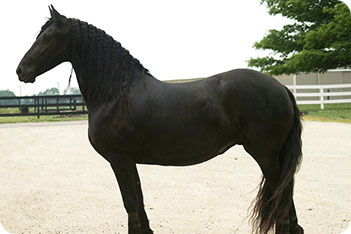
Horseback Riding - Changes Of Rein
Horse Back Flatwork
From: Equestrian and Horse | Horseback Riding
See also: Mounting | Position | Lunging | Jumping
Dismounting | Rider Aids | Dressage Training| Gaits | Rider Aids

Changes Of Rein
In any schooling session, several changes of rein are required. A change of rein is where a complete change of direction occurs. This helps to keep the horse supple on both sides as well as preventing boredom. There are seven official changes of rein, which when ridden correctly will allow the horse and rider to smoothly change the direction in balance and harmony.
The seven changes of rein are;
- Long diagonal from M to K, H to F, K to M and F to H.
- Short diagonal from H to B, K to B, F to E and M to E.
- Up the centre line from A to C.
- Across the middle from E to B.
- Four loop serpentine.
- Two half circles, either 10 meters or 20 meters. for example H half circle to G, and from G half circle to M to change the rein.
- Half 10 meter circle that returns to the track , these can be ridden from H returning at E or K,From K returning to E or H,from F returning to B or M and from M returning to B or F.
Riding School Layout
In the schooling area there should be markers placed around the edge as follows, below is the layout for a school which is 20 meters by 40 meters.
Layout Of Riding Markers For A 20 X 40m School:
C
H G M
E X B
K D F
A
Layout Of Riding Markers For A 20 X 60m School
With a 20 X 60 m school there is 6m from the markers H, M, K and F with the short sides of the school at A and C and 12 m in between the other markers that run up each of the long sides.
C
H G M
S I R
E X B
V L P
K D F
A
Riding A Change Of Rein
With every trot change of rein, the rider must also change their rising trot diagonal. This allows the horse and rider balance more easily on the turns and corners of the rein that they are riding on. This is because as the horse turns for example to the left, then the rider should be sitting when the horses near hind and off fore are on the ground and the off hind and near fore are up in the air, by doing this the rider has their weight on the near hind which allows the horse to push through from behind and balance whilst on the turn.
Changing The Riders Diagonal
By looking at the horses outside shoulder and watching it move forwards and backwards will help the rider to see whether or not they should be sitting or rising to the trot stride. When the horses outside shoulder is back it means that the rider should be in the sitting part of the rising trot, and when the outside shoulder is forward the rider should be in the rising part of the rising trot. To change a rising trot diagonal the rider simply stays sitting for one extra sitting trot beat and then continues with rising trot. The more experienced riders should not need to look at the outside shoulder but will be able to feel through their seat, if the diagonal is correct or not.